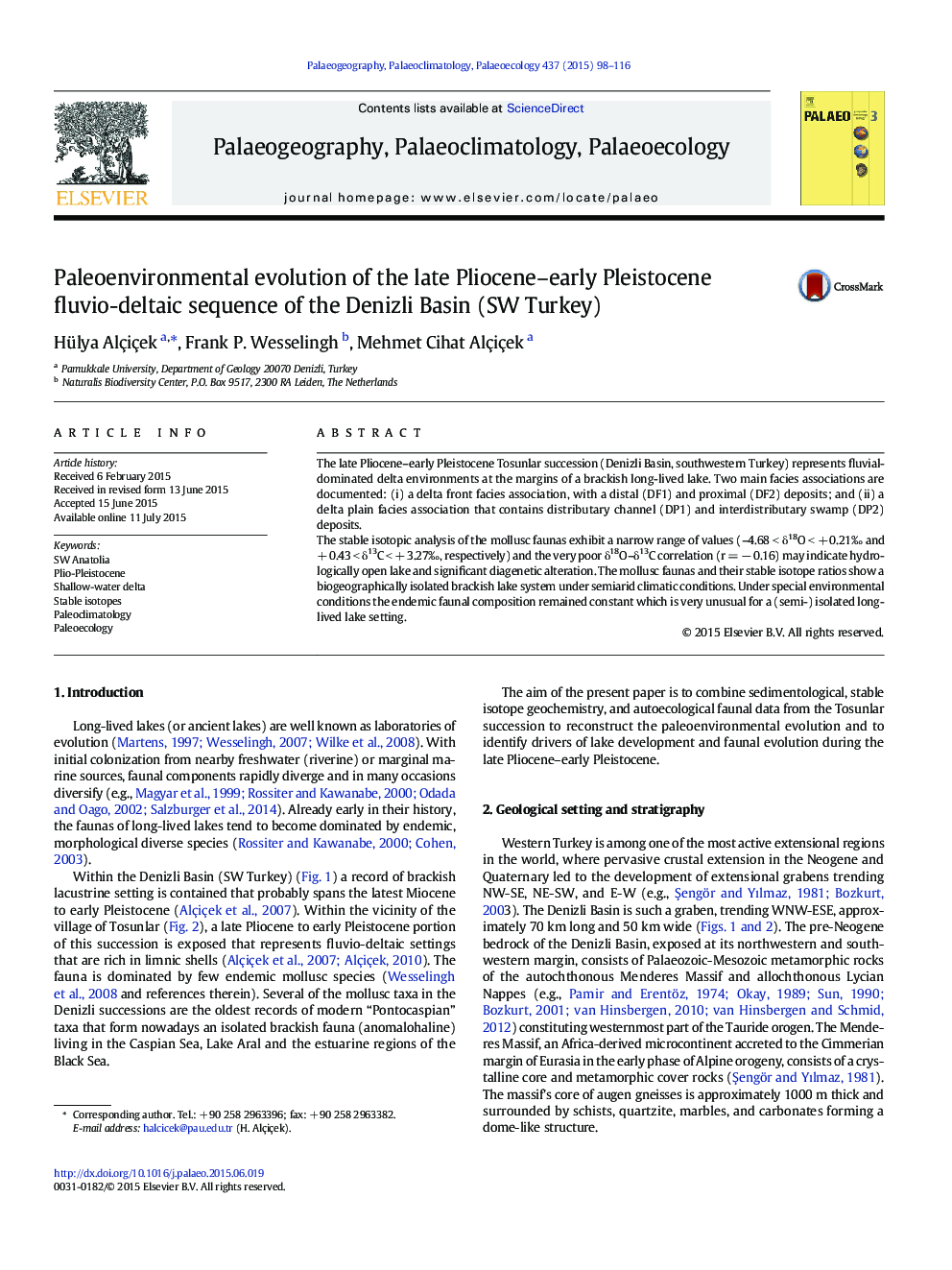| Article ID | Journal | Published Year | Pages | File Type |
|---|---|---|---|---|
| 6349678 | Palaeogeography, Palaeoclimatology, Palaeoecology | 2015 | 19 Pages |
â¢The Late Pliocene-Early Pleistocene Tosunlar succession reflects shallow-water delta.â¢The mollusc faunas and their stable isotopes show a (semi-) isolated brackish lake.â¢The Tosunlar endemic faunal composition remained constant throughout succession.
The late Pliocene-early Pleistocene Tosunlar succession (Denizli Basin, southwestern Turkey) represents fluvial-dominated delta environments at the margins of a brackish long-lived lake. Two main facies associations are documented: (i) a delta front facies association, with a distal (DF1) and proximal (DF2) deposits; and (ii) a delta plain facies association that contains distributary channel (DP1) and interdistributary swamp (DP2) deposits.The stable isotopic analysis of the mollusc faunas exhibit a narrow range of values (-4.68 < δ18O < + 0.21â° and + 0.43 < δ13C < + 3.27â°, respectively) and the very poor δ18O-δ13C correlation (r = â 0.16) may indicate hydrologically open lake and significant diagenetic alteration. The mollusc faunas and their stable isotope ratios show a biogeographically isolated brackish lake system under semiarid climatic conditions. Under special environmental conditions the endemic faunal composition remained constant which is very unusual for a (semi-) isolated long-lived lake setting.
